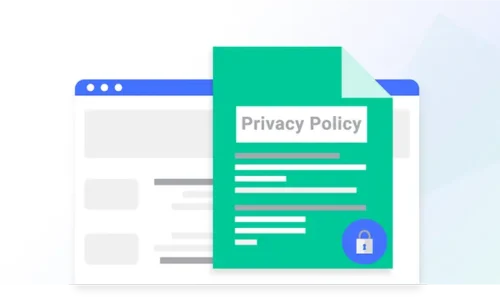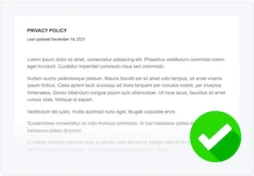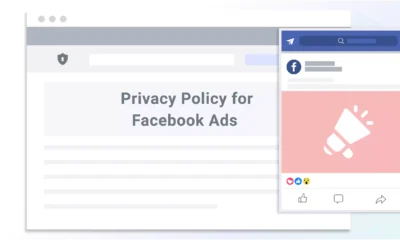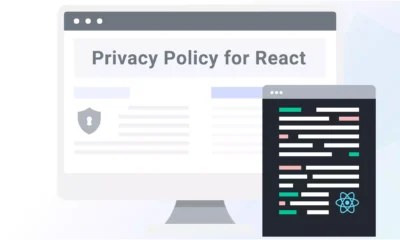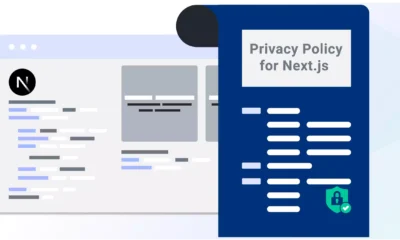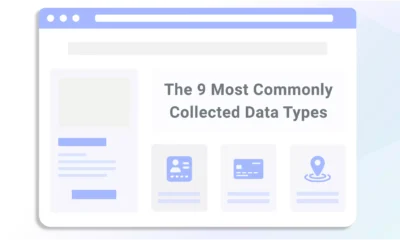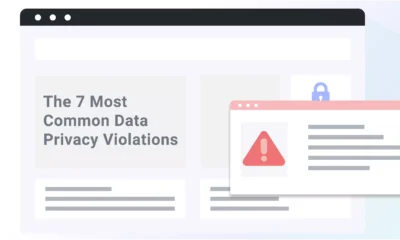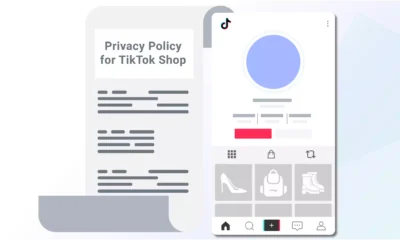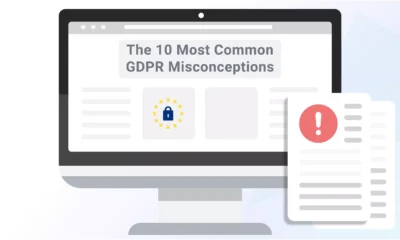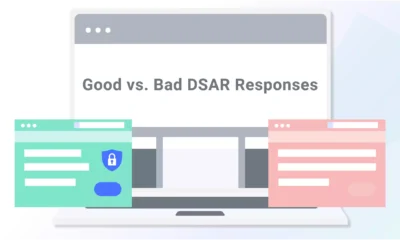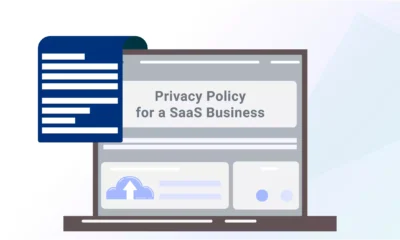A website’s privacy policy outlines if and how you collect, use, share, or sell your visitors’ personal information and is required under data privacy laws.
Using a privacy policy template helps jump-start the process of making one of these essential legal documents for your site.
Below, I walk you through how to download and use our free privacy policy template and explain what a privacy policy is and why it’s important for all websites to have one.
- Sample Privacy Policy for Website [Full Text and Download]
- How To Use Our Privacy Policy Template
- What Is a Privacy Policy?
- Why Do You Need a Privacy Policy?
- What Is Required in a Website Privacy Policy?
- Where To Display Your Privacy Policy
- Website Privacy Policy Examples
- Why Start With a Generic Privacy Policy Template?
- Privacy Policy FAQs
- Summary
Sample Privacy Policy for Website [Full Text and Download]
You can download our free privacy policy template below in the following formats:
- Word Doc
- Google Doc
- Copy & paste the HTML to your website
Additional Template Download Options
How To Use Our Privacy Policy Template
- Step 1: Read through the template entirely and fill in the blank sections and [brackets] with relevant, accurate details about your business.
- Step 2: Remove any sections that do not apply to your site or app, and customize any existing language as needed to suit your needs.
- Step 3: Double-check that your final policy complies with all applicable data privacy laws that impact your business or protect your consumers.
That’s all it takes!
Now, you can post it in easy-to-find spots across your site, like the footer, payment screens, and account creation pages.
Update it whenever your data processing activities or legal requirements change.
What Is a Privacy Policy?
A privacy policy is a legal document that informs users about how you collect and handle their personal data and can have many different titles, including:
- Privacy Agreement
- Privacy Clause
- Privacy Notice
- Privacy Page
- Privacy Policy Statement
While a standard privacy policy template will likely satisfy user demands and legal requirements for your website, depending on the type of business you own, it might help to use a unique privacy policy template customized for your specific needs, for example:
- Mobile app privacy policies
- Privacy policies for Blogger
- WordPress privacy policies
- Ecommerce privacy policies
- Small Business privacy policies
- Email marketing privacy policy
Example of a Standard Website Privacy Policy
A simple privacy policy usually outlines the following information:
- What personal information you collect
- Where the personal information is collected from
- Why you collect the personal information
- How you collect the personal information
- Who the personal information is shared with or sold to
- What rights users have over their data, and how to act on them
- Your site’s contact details
By law, privacy policies must be thorough and easy to read and find.
Make sure your final privacy policy meets these standards, especially when using a template as your starting point.
Why Do You Need a Privacy Policy?
Businesses need a privacy policy for several essential reasons.
Privacy Policies Are Required by Law
Your website or app must comply with all data privacy laws that apply to you, and these laws almost always require you to post a privacy policy in some way.
Data privacy legislation exists on every continent and usually has broad legal thresholds. They might apply to your business depending on factors like:
- Where your business is located
- Where your consumers are located
- How much data you track
Some of the laws that dictate if and when you legally need a privacy policy page for your website or app include:
- General Data Protection Regulation (GDPR): This law protects consumers in Europe and requires a generic privacy notice.
- California Consumer Privacy Act (CCPA): This law regulates privacy policy requirements and protects users in California.
- California Online Privacy Protection Act (CalOPPA): Adopted in 2004, CalOPPA set the standard for the presentation and wording of privacy policies.
- All Current U.S. State-Level Privacy Laws: More than 16 states have data privacy laws in the U.S., and all require a compliant privacy policy.
- Personal Information Protection and Electronic Documents Act (PIPEDA): A simple privacy policy can help entities meet the fair information principles PIPEDA requires.
- Children’s Online Privacy Protection Act (COPPA): This federal U.S. law applies to any business marketing to children and requires a comprehensive privacy policy.
- Gramm-Leach-Bliley Act (GLBA): The GLBA requires websites that are “significantly engaged” in financial activities to publish a clear, accurate, and conspicuous privacy policy.
Penalties for violating these laws include significant fines, criminal penalties, and damage to brand reputation.
Fortunately, our legal team keeps our comprehensive privacy policy template up to date to help you meet the guidelines of new and evolving data privacy laws.
Privacy Policies Are Required by Third-Party Services
Third-party services often require the people using their tools to also have a compliant privacy policy as part of their terms of use agreements.
Using a template can help you meet these third-party service requirements.
Some examples of third-party services that require you to have a privacy policy include:
- Amazon
- Apple
- ClickBank
- Google (AdSense, Ad Words, Analytics, and Play Store)
- Meta/Facebook
Your privacy policy should clearly state what third parties can access user data and explain how and why the information is shared.
Privacy Policies Increase Transparency and Build Trust
Privacy is a primary concern for modern consumers — people want to know what information websites collect about them and what it’s used for.
48% of users have stopped buying from a company over privacy concerns. (Tableau)
According to the Global Consumer State of Mind Report 2021, 60% of users say they would spend more money with a brand they trust to handle their information responsibly.
Making an honest, accurate privacy policy using a template ultimately builds trust between your company and the user so they feel secure while visiting your website or using your app.
What Is Required in a Website Privacy Policy?
Next, I’ll walk you through the most common clauses that appear in a boilerplate privacy policy.
Introduction Section
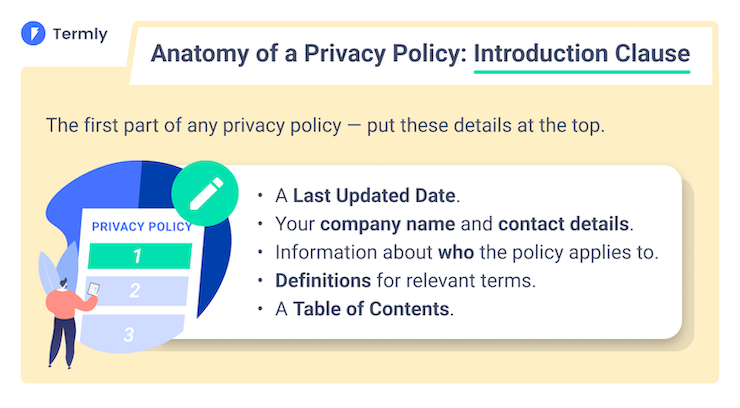
Every website privacy policy needs an intro section that explains who you are, what the policy is for, and who and what it applies to.
A good template will have this section available for you to fill in yourself.
To build transparency with your users, I recommend including contact information and a Table of Contents.
What Information You Collect and How
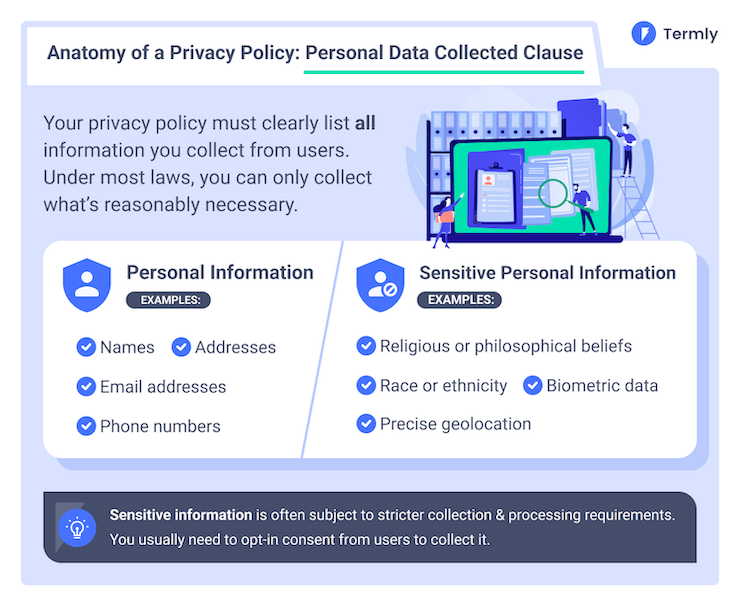
Under privacy laws like the GDPR and CCPA, users have the right to know what data you collect from them and how it gets used, making this a legally necessary clause.
Reliable privacy policy templates will account for this and include a section for you to list out all personal data your business collects in a properly formatted way.
Personal data includes details like full names, email addresses, phone numbers, and categories of sensitive information.
Why You Collect the Personal Data
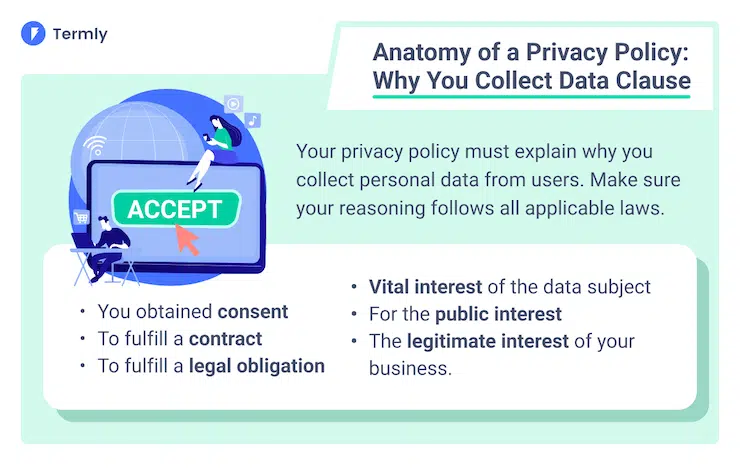
Businesses under specific privacy laws must inform users about why their data gets used, making this a critical clause in your website’s privacy policy.
A good privacy policy template will have a section available where you can transparently explain what you do with the information you collect.
For example, your business might use it to create a user account, display personalized content based on user interests, conduct research and analysis, or send order confirmations.
Data Safety and Security
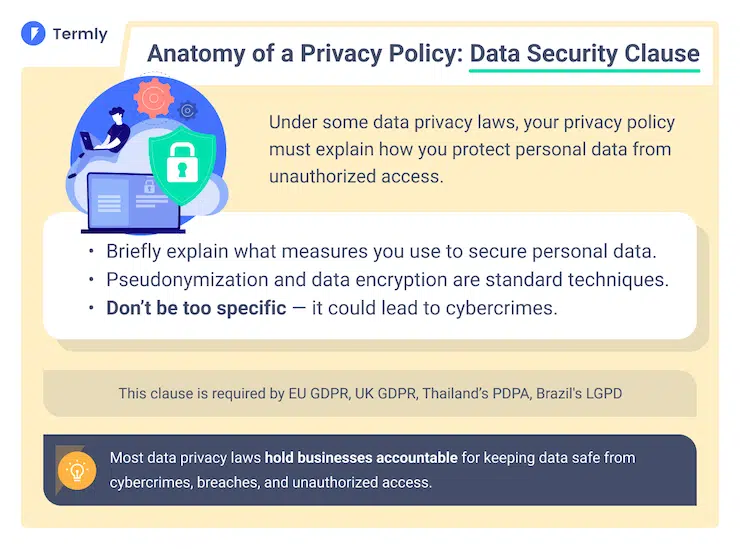
Most data privacy laws stipulate that businesses are responsible for protecting user data from cybersecurity breaches.
A reputable privacy policy template will have a clause available where you can describe the security measures your company follows to keep consumer data safe.
For example, you might use firewalls or encryption methods.
If You Share or Sell Personal Information
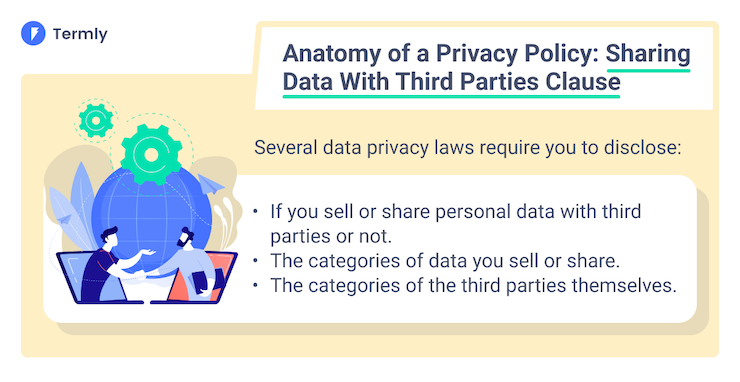
Your privacy policy must disclose any sharing of user data with third parties, as required by several data privacy laws.
Make sure you’re using a template that has this clause available for you to customize.
Do You Use Cookies or Track Your Users
![]()
Cookies are considered personal data under laws most data privacy laws.
You’ll need a clause in your privacy policy outlining which ones you use, why, and what rights and controls users have over them.
A good template will have a cookies and other trackers section available to fill out.
User Rights Over Their Personal Data
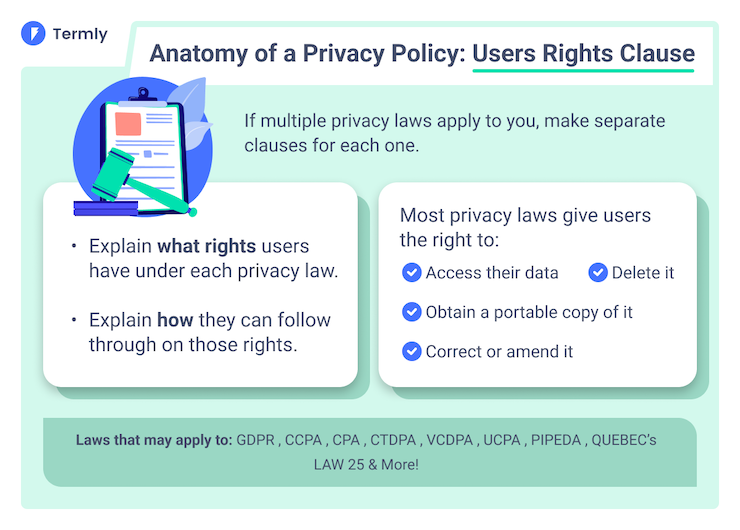
Different laws outline data privacy rights consumers can legally act on, and you must include a clause in your privacy policy informing users about their rights and how they can act on them.
Some privacy policy templates might have sections available for different laws, or you can add your own as necessary.
Transferring Information Internationally

If you transfer data you’ve collected internationally, use a template that allows you to insert a business transfer clause into your privacy policy.
Doing so is essential because many privacy laws, including the GDPR, limit transferring personal data outside the country unless the other country has appropriate safeguards or is considered safe.
Data Retention Policy
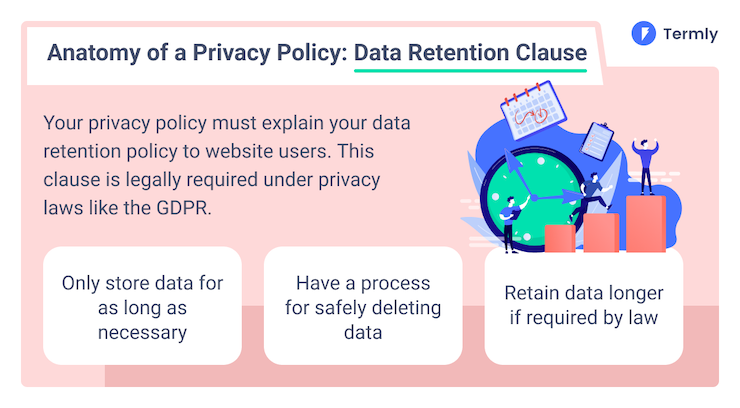
Some privacy laws require you to explain your data retention policy in your privacy policy, so find a template that has this clause available for you to edit.
Most privacy laws only permit you to store data for as long as necessary to achieve the purposes for the processing as disclosed to users unless longer retention is required by law.
Collecting Information From Children
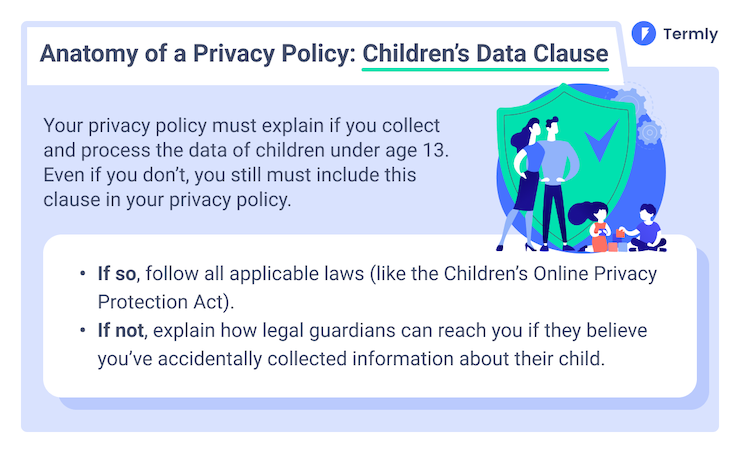
If you collect information from minors under 13, you must follow additional regulations in adherence with laws like COPPA and include a clause in your privacy policy expressing how you use the information and the rights and controls legal guardians retain over that data.
Even if you don’t collect data from children, you still need to inform legal guardians how to contact you if they believe you’ve wrongfully collected details about their child.
Double-check that the template you use has this information — if you’re using Termly’s template, you’re all set.
Universal Opt-Out Mechanisms
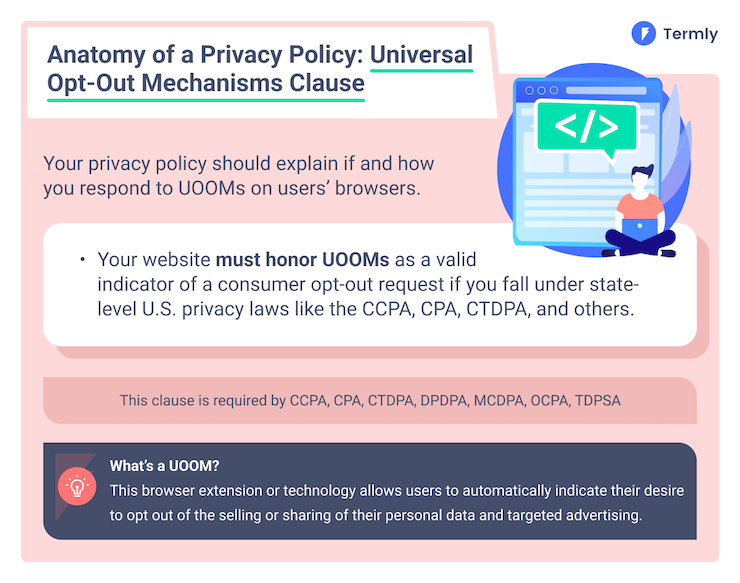
Many U.S. state level privacy laws require websites to honor browser settings and technology called universal opt-out mechanisms (UOOMs) as a verifiable consumer request to follow through on their various opt-out rights.
A good template will have space to add this information to your final privacy policy.
Company Contact Information
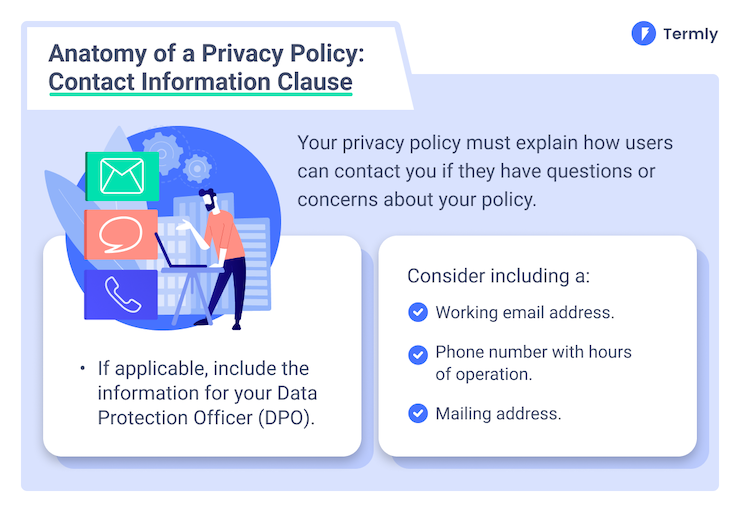
Finally, you should include a clause in your privacy policy that lists your company contact information — all templates should have space for you to do so.
Include at least your mailing address, customer support email, and phone number so consumers can easily reach you if they have questions or concerns or want to act on their privacy rights.
Additional Tip: Include Links to Other Legal Documents
It’s a best practice to link to other legal policies in the clauses of your privacy policy template, as this makes it easy on consumers and ensures they have access to all necessary information.
For example, provide a link to your cookie policy under the Cookies and Other Trackers clause in your privacy agreement.
You can even link to your privacy policy within those other legal documents, like your terms and conditions or disclaimer; this way, you ensure your users can always find, access, and read all of your legal policies.
Where To Display Your Privacy Policy
Once you’re done formatting your template, display your privacy policy in the following easy-to-find locations on your website, mobile app, or desktop app:
Website Privacy Policy Examples
Below I’ve gathered some privacy policy examples from larger companies to help inspire you as you work on your legal agreement.
The New York Times Privacy Policy
Good privacy policies are simple to read and easy to find on a website or app, and the New York Times is a good sample.
Their policy is easy to find on their website and uses clear, straightforward language.
For example, they include a clause explaining guidelines for children, and express that, in compliance with COPPA, their services are not directed to minors.
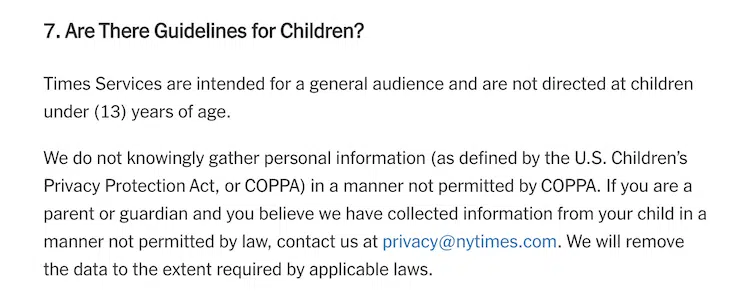
They also provide an email address directly in the clause so parents or guardians can click on the link and easily request the deletion of any data accidentally gathered about a minor, which makes addressing privacy concerns much easier for the company and concerned guardian.
Apple’s Privacy Policy
Another good sample privacy policy to consider comes from Apple.
As shown in the screenshot below, Apple clearly explains what personal data it collects from users in an easy-to-read bullet list.
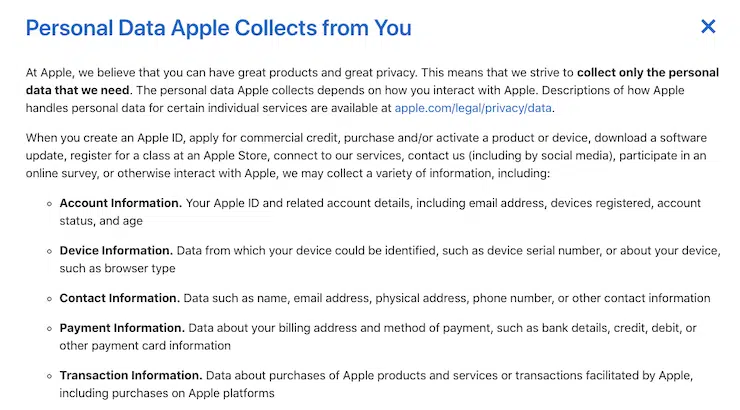
For legal compliance purposes, it’s important when using a privacy policy template to write the details about your business in a way that’s easy for all users to read and understand.
Why Start With a Generic Privacy Policy Template?
Privacy policies are challenging legal documents to make from scratch, so I recommend starting with privacy policy samples and templates, which are excellent free resources.
A major benefit to using a privacy policy template instead of writing your own privacy policy is that a ton of the writing is already done for you.
For example, we’ve pre-filled our free privacy policy template with the most common clauses and left plenty of room for you to customize it in whatever way your business needs.
They’re also ideal for basic websites or apps that collect little to no data and rely on only a few third-party services.
But if you’re short on time or want more hands-on guidance and support while working on your company’s privacy policy, try Termly’s Privacy Policy Generator.
Privacy Policy FAQs
Below, I answer some of the most frequently asked questions we get about privacy policies.
Do I need a privacy policy?
Yes, you need a privacy policy if you collect personal information and fall under privacy laws.
What laws require a privacy policy?
A privacy policy is required by nearly every privacy law that exists, including all U.S. state-level privacy laws, the GDPR, and more.
What should my privacy policy include?
Your privacy policy should include clauses about:
- The information you collect from users,
- How and why you gather that data,
- How you use the data
- If you share the data with third parties
- What your users’ rights are over their data.
How often do I need to update my website’s privacy policy?
You need to update your privacy policy whenever your data processing activities change.
Under laws like the CCPA, you’re required to update your privacy policy once every 12 months.
Can I copy someone else’s privacy policy?
No, do not copy someone else’s privacy policy.
Legal documents are copyrighted materials, and plagiarizing someone else’s policy won’t cover the individual needs of your business.
If you’re short on time, consider using our comprehensive Privacy Policy Generator.
Is a free privacy policy template enough for my website?
Yes, when filled out accurately, privacy policy templates like ours can be enough for business owners, website owners, and app developers to make a privacy agreement that adheres to relevant privacy regulations.
Summary
If you collect personal information from your users, you must publish a privacy policy to comply with global data privacy laws and regulations.
But posting one has other benefits, like building your brand reputation by showing consumers they can trust your business with their personal data.
To easily make one, try using a sample privacy policy template that includes clauses you can customize with details about your business’s unique data processing activities and post it in relevant places across your website or app.
When you’re ready to start, download our free sample privacy policy template and easily tailor it to your business needs.
But if you’re looking for a different type of privacy policy template, have a look at our other options to find what you need:
| Privacy Policy | Description |
| GDPR Privacy Policy | A GDPR-ready privacy policy for any online business. |
| Mobile App Privacy Policy | A privacy policy for apps on the App Store and Google Play. |
| Ecommerce Privacy Policy | A privacy policy built specifically for online eCommerce stores. |
| Email Marketing Privacy Policy | A privacy policy for email newsletters and email marketing. |

